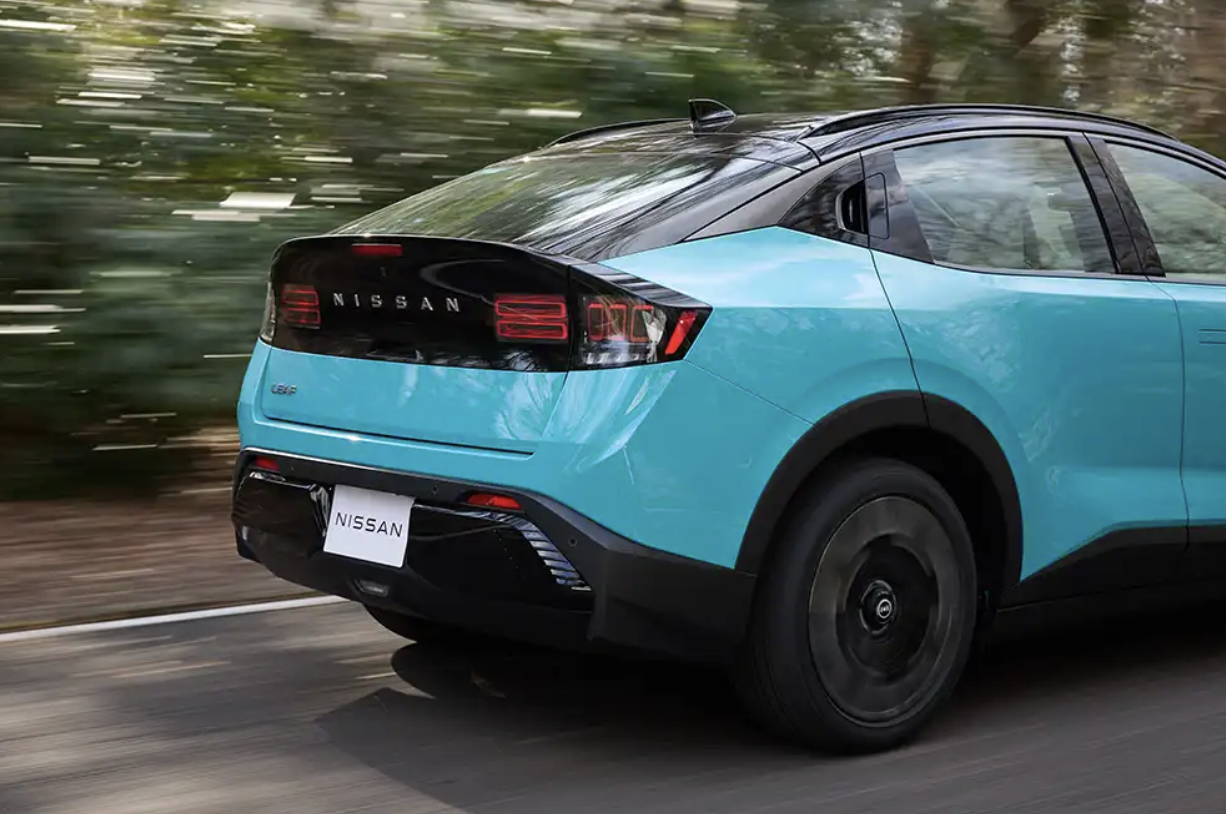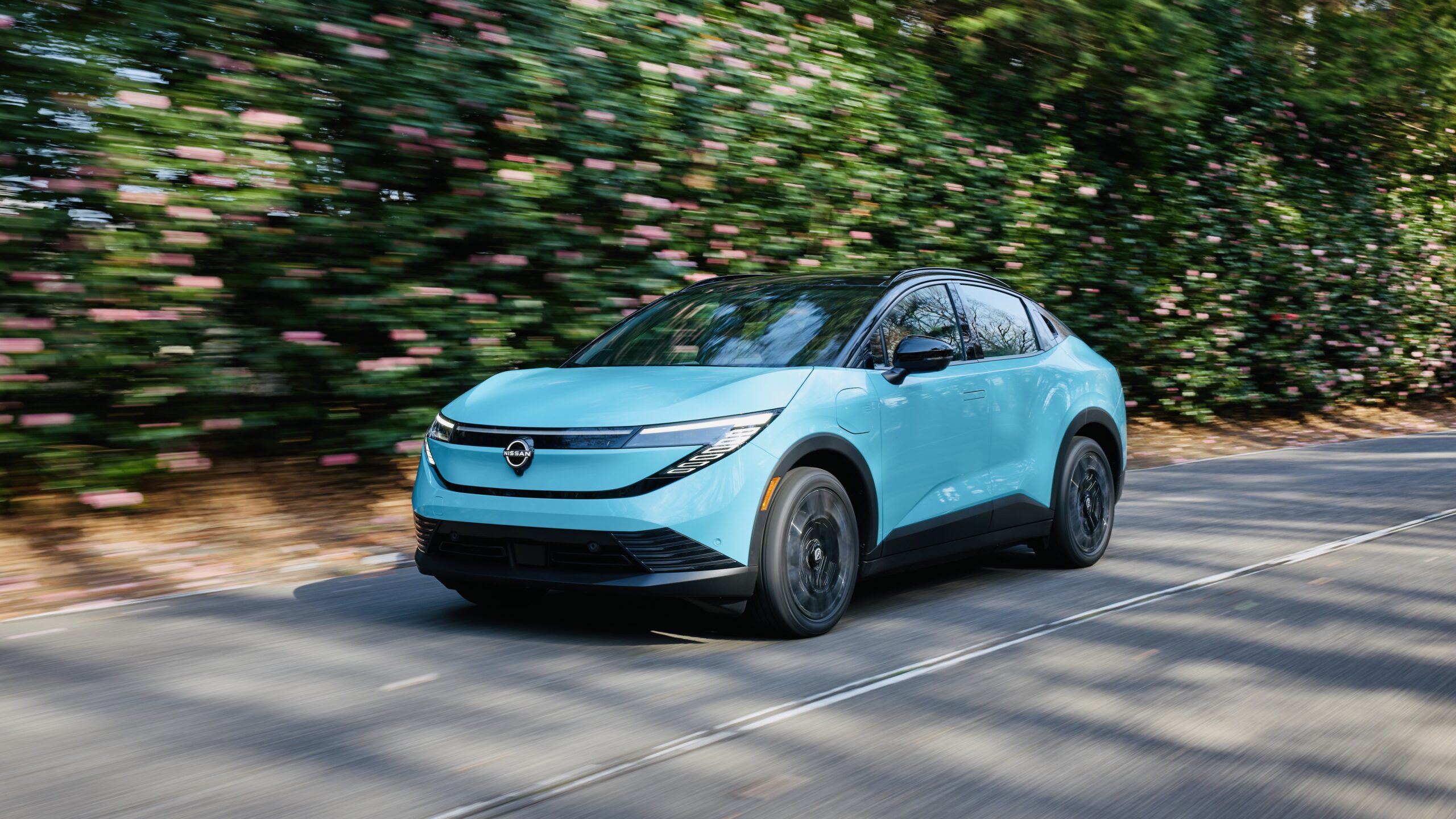
Nissan’s 2026 Leaf has emerged as a stylish model that isn’t likely to bust most budgets and can deliver up to 303 miles of range in its most efficient trim.
Nissan calls the redesigned and re-engineered 2026 Leaf an SUV-styled crossover, but its four-door, fastback design looks less SUV and more sporty tall sedan – albeit with a liftgate.
Call it what you will, the new Leaf – on paper – cures most everything that was wrong about the previous versions (there was a second-generation model in 2018 that improved on the original 201 Leaf’s frog-like looks but still was a bit clunky and didn’t deliver the kind of range, charging speed or performance modern EV shoppers seek.
For 2026 there’s a sleeker, more streamlined exterior design that’s essentially a scaled-down version of the Nissan Ariya EV with a swoopier rear profile, along with a modern open interior, a little more power, a lot more range and much improved charging.
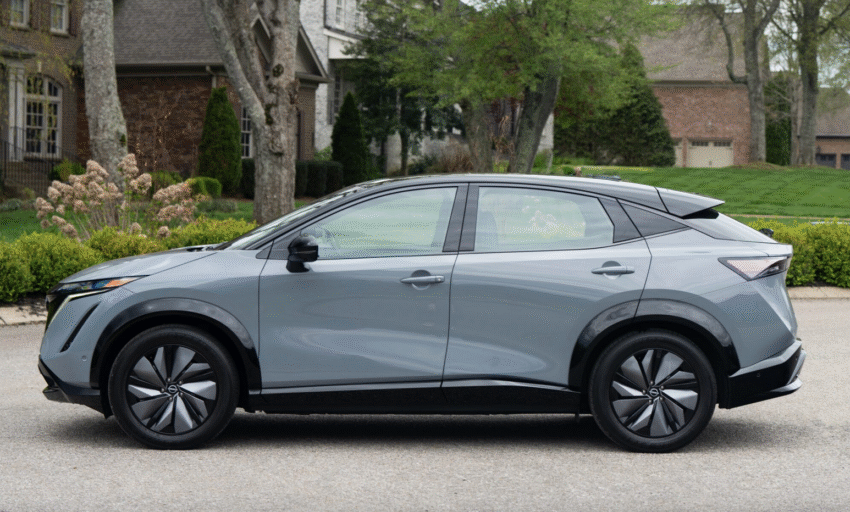
Leaf gets Power Boost
Nissan is launching its Gen 3 Leaf in a single-motor, front drive configuration, apparently reserving all-wheel drive for the more upscale Ariya.
Most versions get a 75 kilowatt-hour (usable), liquid-cooled battery pack and deliver the same 214 horsepower as the previous generation, but with a bit more torque, at 261 pound-feet, up from 250 lb-ft.
Most competitors in the small crossover EV segment offer more power in their single-motor trims and have optional dual-motor, all-wheel drive versions for those seeking more oomph and better handling in wet and slippery conditions.
On the plus side, the base version of the 2026 Leaf gets a new 52 kWh (usable) battery pack and a more powerful motor that combine to provide 174 horsepower and 251 lb-ft of torque, a significant upgrade from the previous base trim’s 40 kWH battery and 147 ponies and 236 lb-ft.
We’ll reserve comment on how the new Leaf performs until Nissan lets us behind the wheel. The 2026 Leaf isn’t expected to go on sale in the U.S. until late summer or early fall.
Quicker charging, too
The upgraded charging system for 2026 means the third generation Leaf can take on power at a rate of up to 150 kW an hour – triple the previous generation’s 50 kW maximum for DC fast charging.
Nissan says it will take about 35 minutes to bring a 90% depleted 75 kWh battery back to 80% of capacity in optimal conditions. While NACS is now the standard for fast charging, the 2026 Leaf can use CCS chargers with an adapter. It still uses the J1772 connector for for Level 1 and Level 2 home and workplace charging ut can use a Tesla charger wit the appropriate adapted. [
All previous Leafs also had two charging ports – CHAdeMo and J1772 – but located under the same door in the top center of the front fascia. For 2026, Nissan has moved the ports to the front fenders – the NACS port for DC fast charging on the right and te J1772 port on the left side.
The 2026 Leaf has a 7.3 kW on-board charger for Level 1 and Level 2 charging, not quite as quick as the 11 kW charging capacity common for many new mid-range EVs but still faster than the previous Leaf generation’s 6.6 kW maximum.
The new Leaf will be Nissan’s first model to support Plug&Charge system that will enable it to use compatible DC fast chargers from Tesla, Electrify America, Charge Point, EVgo, Ionna and others without a phone app or RFD card. Users can set up a payment method in their Nissan account and the Leaf will automatically start charging when it’s plugged in and the cost will be debited from the payment method on file.
More Trim Levels for 2026
After pruning the Leaf lineup to just two trim levels in recent years, Nissan’s going to offer the 2026 Leaf in four trims – the base S with the 52 kW H battery and the S+, SV+ and Platinum+, all with the 75 kWh battery.
The base trim won’t be available until later in the model year, likely sometime in the first half of calendar 2026.
The S and S+ trims get 12.3-inch, horizontally oriented digital screens for driver info and infotainment displays, up from 8 inches, while the SV+ and Platinum+ trims will get the 12.3-inch driver info screen and a 14.3 inch infotainment screen.
Wireless Apple CarPlay and Android Auto connectivity is standard across the lineup, but only the SV+ and Platinum+ trims get wireless phone charging pads. Those two trims also get a Google built-in based infotainment system. The two lower trims stick with the basic Nissan infotainment software.
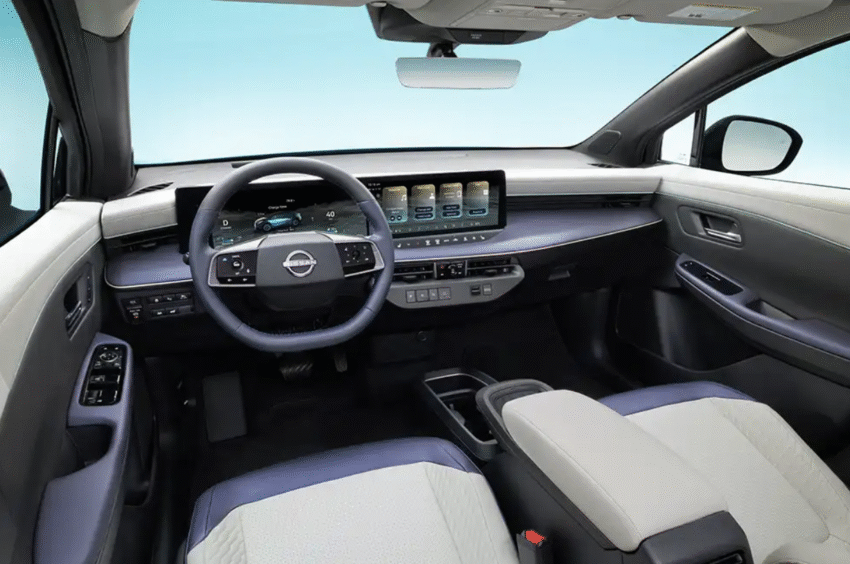
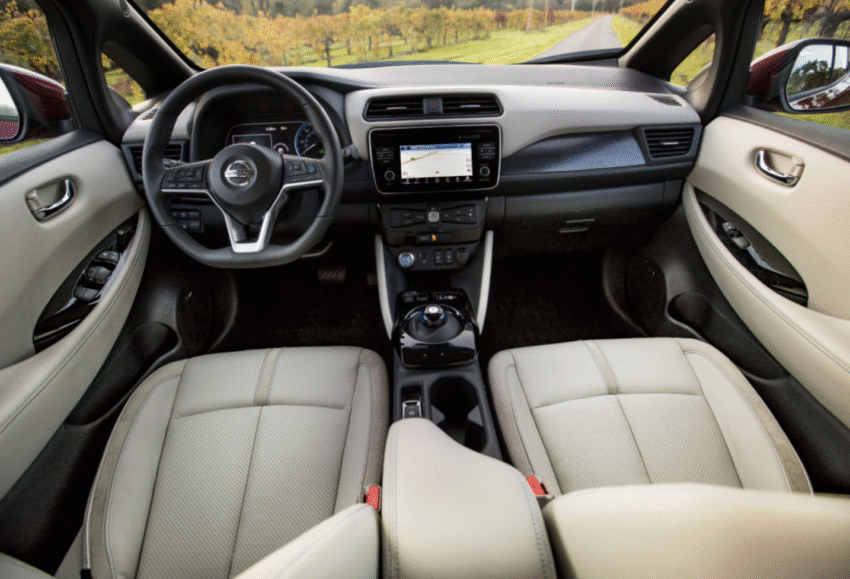
The SV+ and Platinum+ trims get battery-conserving heat pump heating systems and also can be ordered with battery heaters for an additional cost.
The two lower trims get 4-speaker, unbranded audio systems, the SV+ jumps to a 6-speaker system and the Platinum+ gets a 10-speaker Bose system.
The first three trims get 18-inch alloys and all-season tires, while the Platinum+ gets 19-inch wheels mounted with all-season sport tires.
Reserved for the Platinum+ trim are goodies such as an auto-dimming glass roof, motion-activated power rear lift-gate, multi-color ambient interior lighting, a lighted Nissan emblem in the center of the front grille, heated exterior side mirrors and steering wheel, a head-up display, rain-sensing automatic windshield wipers.
All trims have vehicle-to-load capability (to power 120-volt appliances and power tools, for instance) via an adapter that connects through the J1772 port. The Platinum+ also has a 120-volt vehicle-to-load plug in the rear seating area.
Space in the New Leaf
A vehicle redesign these days usually results in a larger moel – but not so with the 2026 Leaf. Instead, Nissan’s designers shortened it by 3 inches versus the outgoing versions, reduced the wheelbase and overall height by four-tenths of an inch each, and cut ground cllarance to 5.3 inches from 5.9 inches. The body did get eight-tenths of an inch wider, though,
Still, there’s more room in the passenger cabin, especially in rear seat legroom, which grows by 1.7 inches. Otherwise, most interior space measurements are marginally larger – front legroom is up three-tenths of an inch, for instance. The exception is headroom, which drops slightly – three-tenths of an inch for the front seating area – due to the new design’s rearward sloping roofline.
The extended rear legroom cuts into the primary cargo bay’s capacity, reducing the area behind the back seat to 20 cubic feet from 24 cu. fit in the 2025 model. That’s about four standard grocery bags worth of room. Fold down the rear seat backs, though, and total cargo capacity swells to 56 cubic feet, up from 30 cubes in the previous model.
2026 Leaf Pricing – TK
Nissan hasn’t talked pricing yet, but for 2025 the base Leaf S starts – before generous discounts as dealers try to move inventory – at $29,280 including a $1,140 destination fee, the SV+ starts at $37,330 and the larger, more modern and more upscale 2025 Nissan Ariya EV starts at $41,160.
We expect the 2026 Leaf to start in the low $30,000s and to top out at around $40,000 although all with pricing is iffy because unlike the current Tennessee-built Leaf, 2026 models will be built in Japan and shipped to the U.S. and thus will be subject to whatever tariff the Trump Administration is imposing on imported autos by the time it starts crossing the ocean.
While EVs built outside the U.S. have been at a disadvantage because final assembly in North America is required for eligibility for federal electric vehicle incentives, the GOP-backed tax bill wending its way through Congress would eliminate those incentives, which otherwise would offset as much as $7,500 of the purchase prices of EVs from General Motors, Ford, Stellantis and Tesla, as well as a those of a handful of models from overseas EV makers with North American assembly plants – Acura, Genesis. Honda, Hyundai and Kia.
Range
Thanks to its sleek new shape with design features such as flush door handles, a flat underbelly, active grille shutters and aerodynamic wheels, the 2026 Leaf boasts an impressively low drag coefficient of just 0.26, which helps boost range (for comparison, the Tesla Model S and Mercedes-Benz EQS sedans have drag coefficients of just .20, while a Jeep Wrangler is at 0.45 and an unmodified Ford F-150 is at .46).
Nissan says the S+ trim should deliver up to 303 miles of range an a single charge. The heavier SV+ comes in at a Nissan-estimated 288 miles while the Platinum+, even heavier and riding on bigger tires with increased rolling resistance, drops to 259 miles.
The company hasn’t provided estimates for range or efficiency for the base S trim. Official EPA range and efficiency ratings for all trim levels will be released closer to the 2026 Leaf’s on-sale date.
Vastly improved range – the best the 2025 Leaf can offer is 212 miles – puts the 2026 Leaf comfortably ahead of its closest likely competitors, the 260-mile Hyundai Kona EV and 253-mile Kia Niro EV.
Other small crossover EVs, such as the all-electric version of the Chevrolet Equinox, often offer at least one trim that can meet or top the 300-mile mark, but usually because they are slightly larger and can carry a bigger battery. The 309-mile front-wheel drive version of the Equinox EV, for instance, carries an 85 kWh battery pack but is10-inches longer overall than the new Leaf.
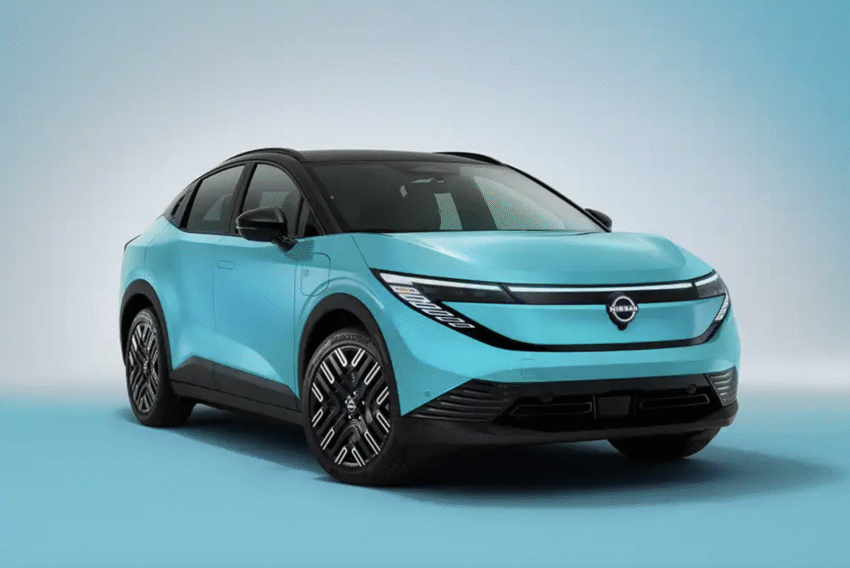
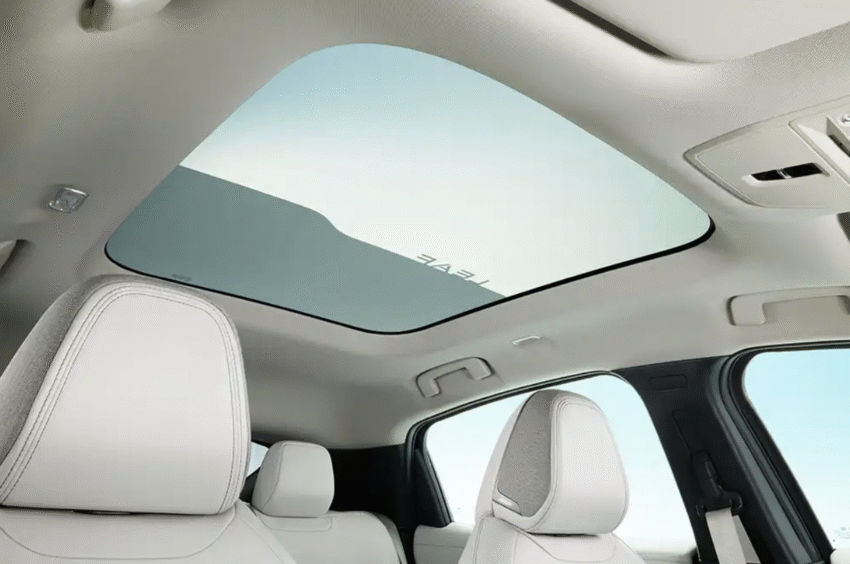
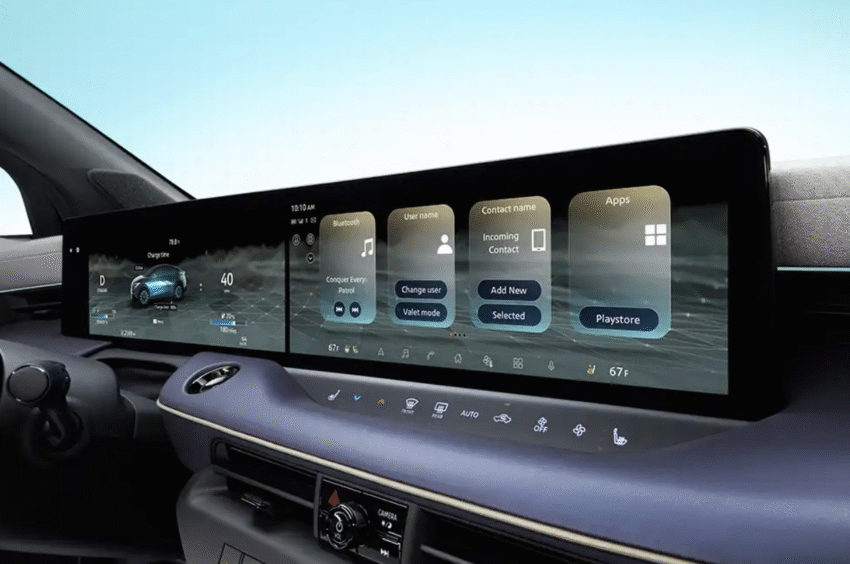
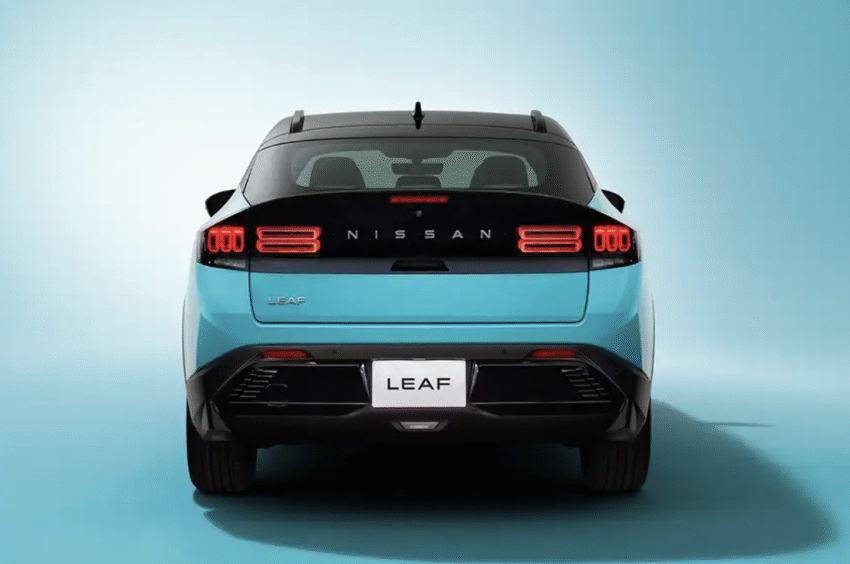
Safety and the 2026 Leaf
The new Leaf hasn’t been crash tested yet by either the National Highway Traffic Safety Administration (NHTSA) or the nonprofit Insurance Institute for Automotive Safety (IIHS). But it shares a platform with the Ariya, which has been awarded a 5-star safety rating by NHTSA and a Top Safety Pick rating by IIHS. While sharing platforms doesn’t guarantee similar crash test results, we’d expect the 2026 Leaf to do well when tested.
Insofar as advanced safety and driver assistance systems go, the new Leaf is well-equipped. Standard features include forward collision warning with automatic emergency braking and pedestrian and cyclist detection, rear cross traffic alert, lane departure warning and lane keeping assist, blind sport warning and side collision intervention, and 3D surround view monitor, and Nissan’s ProPilot Assist suite with full-range intelligent cruise control and lane centering.
